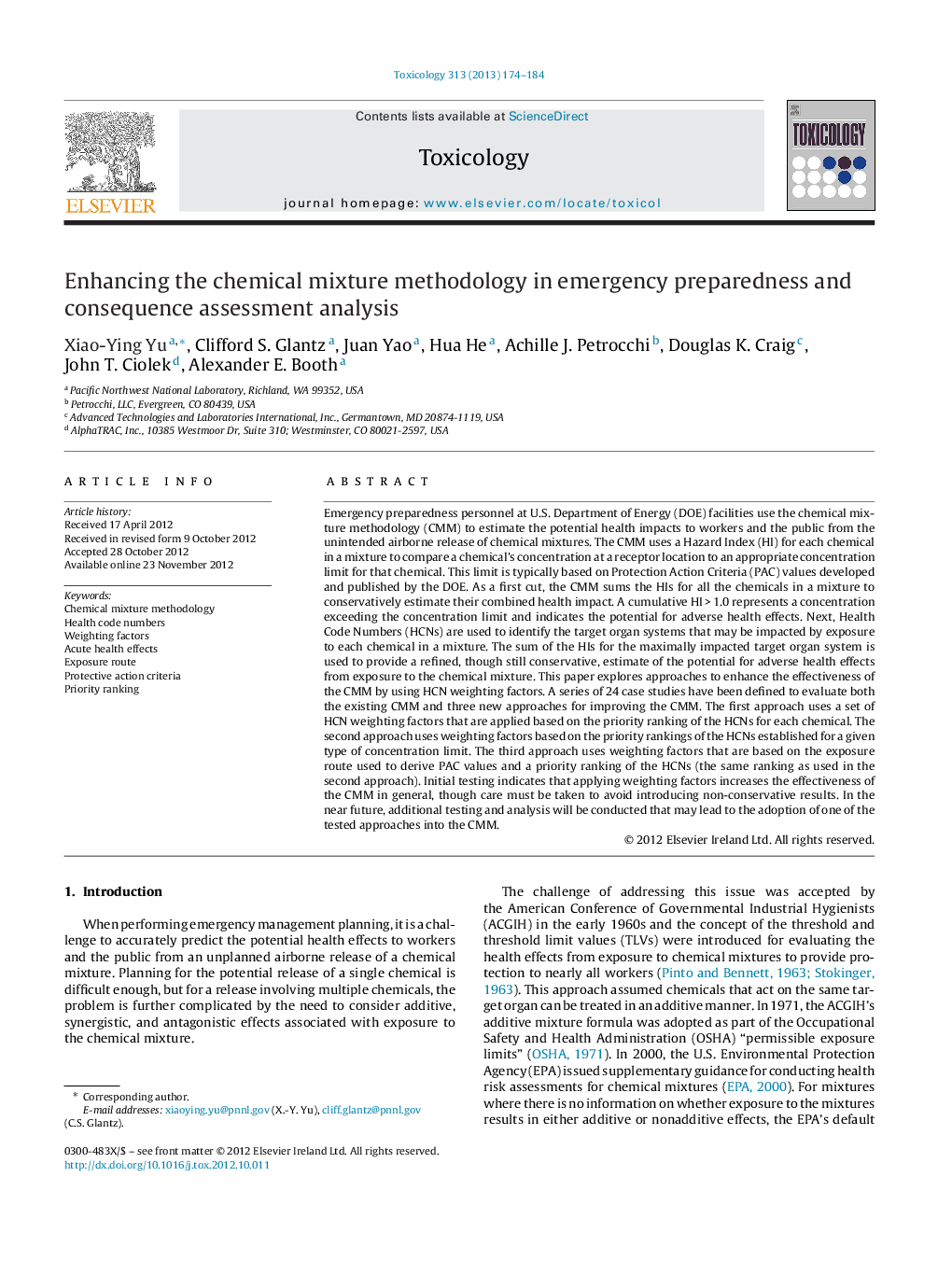| کد مقاله | کد نشریه | سال انتشار | مقاله انگلیسی | نسخه تمام متن |
|---|---|---|---|---|
| 2595655 | 1562343 | 2013 | 11 صفحه PDF | دانلود رایگان |

Emergency preparedness personnel at U.S. Department of Energy (DOE) facilities use the chemical mixture methodology (CMM) to estimate the potential health impacts to workers and the public from the unintended airborne release of chemical mixtures. The CMM uses a Hazard Index (HI) for each chemical in a mixture to compare a chemical's concentration at a receptor location to an appropriate concentration limit for that chemical. This limit is typically based on Protection Action Criteria (PAC) values developed and published by the DOE. As a first cut, the CMM sums the HIs for all the chemicals in a mixture to conservatively estimate their combined health impact. A cumulative HI > 1.0 represents a concentration exceeding the concentration limit and indicates the potential for adverse health effects. Next, Health Code Numbers (HCNs) are used to identify the target organ systems that may be impacted by exposure to each chemical in a mixture. The sum of the HIs for the maximally impacted target organ system is used to provide a refined, though still conservative, estimate of the potential for adverse health effects from exposure to the chemical mixture. This paper explores approaches to enhance the effectiveness of the CMM by using HCN weighting factors. A series of 24 case studies have been defined to evaluate both the existing CMM and three new approaches for improving the CMM. The first approach uses a set of HCN weighting factors that are applied based on the priority ranking of the HCNs for each chemical. The second approach uses weighting factors based on the priority rankings of the HCNs established for a given type of concentration limit. The third approach uses weighting factors that are based on the exposure route used to derive PAC values and a priority ranking of the HCNs (the same ranking as used in the second approach). Initial testing indicates that applying weighting factors increases the effectiveness of the CMM in general, though care must be taken to avoid introducing non-conservative results. In the near future, additional testing and analysis will be conducted that may lead to the adoption of one of the tested approaches into the CMM.
Journal: Toxicology - Volume 313, Issues 2–3, 16 November 2013, Pages 174–184